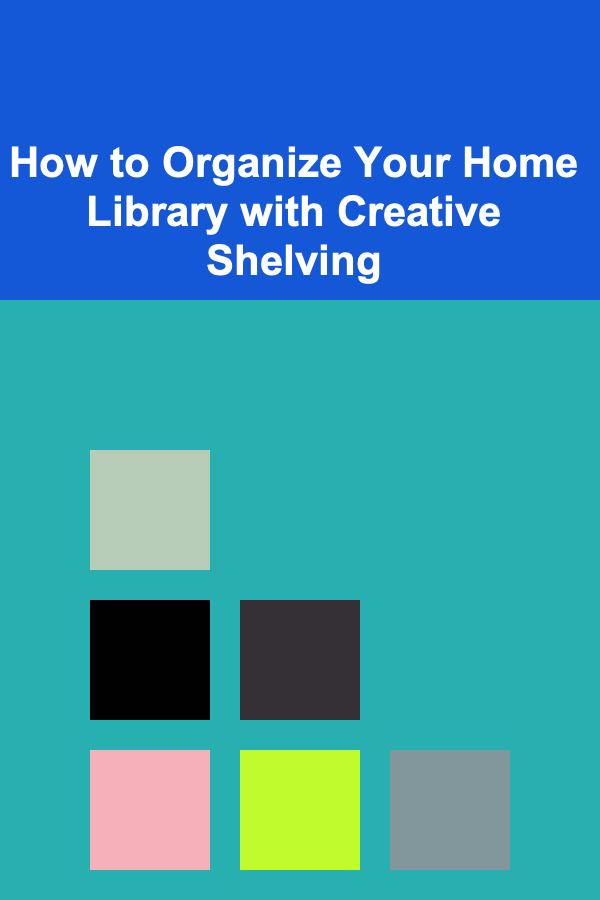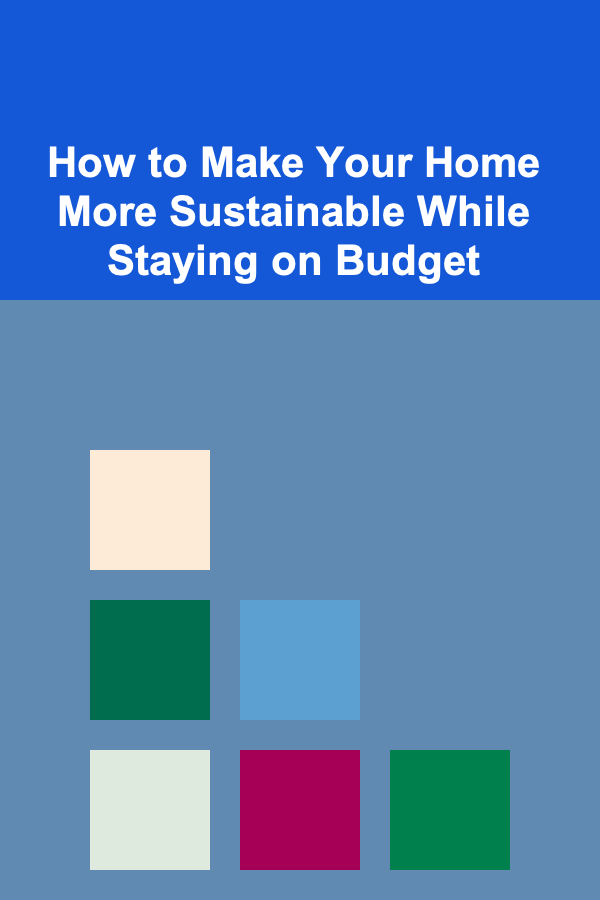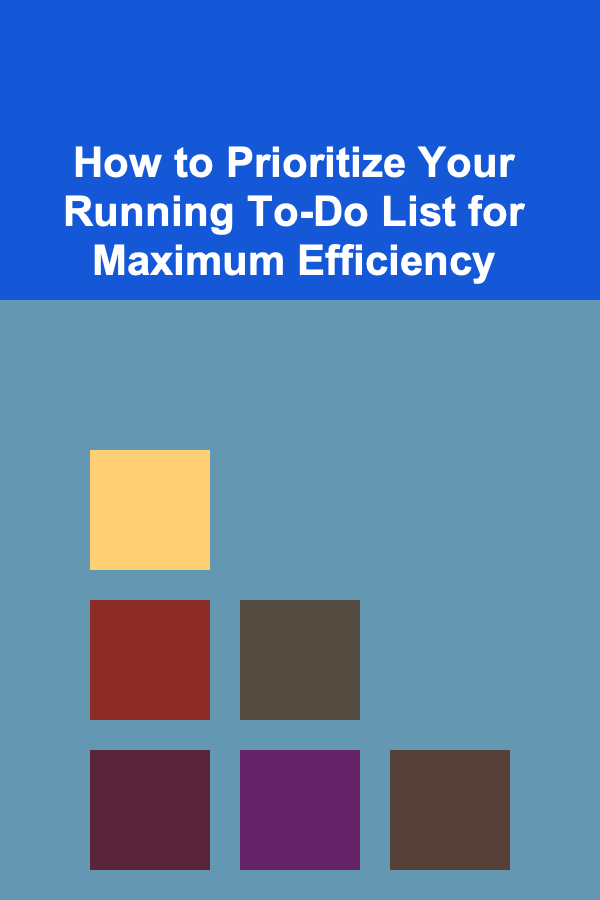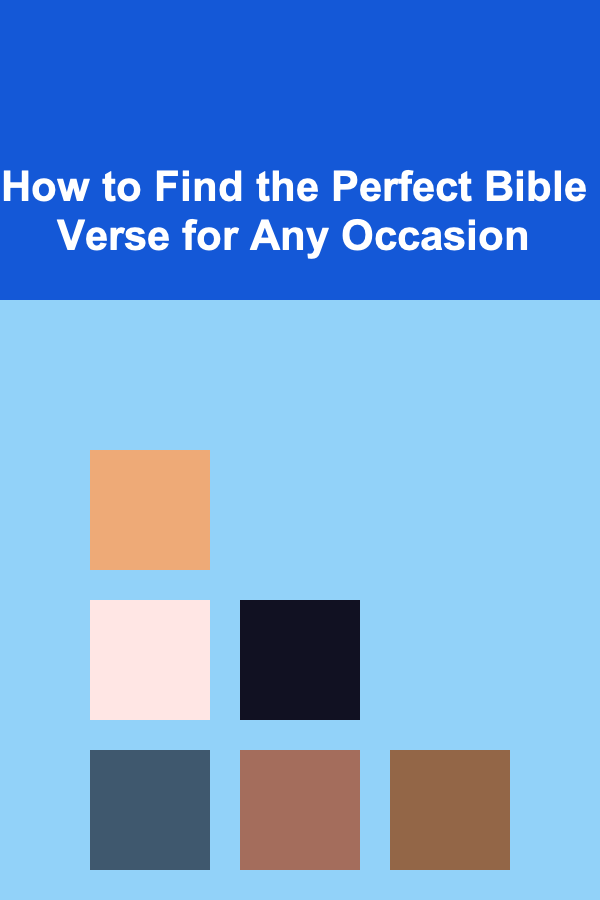
How to Organize Your Home Library with Creative Shelving
ebook include PDF & Audio bundle (Micro Guide)
$12.99$7.99
Limited Time Offer! Order within the next:

A home library is more than just a collection of books---it's a sanctuary where knowledge, creativity, and relaxation meet. Whether you are a passionate reader, a book collector, or someone who enjoys the aesthetic of books in your home, organizing your home library in a way that suits your lifestyle and your space can be both functional and visually striking. One of the most important elements in creating a home library that works is finding the right shelving solutions.
In this article, we'll explore how to organize your home library with creative shelving, providing tips on space optimization, stylish storage solutions, and effective organization methods that will keep your books accessible and your home tidy.
Understanding Your Needs and Space
Before you dive into purchasing bookshelves or organizing your books, it's crucial to assess your needs and available space. Each home library is unique, and the way you arrange your books will depend on several factors.
1.1. Evaluate the Available Space
Start by taking a close look at the space you have for your library. Are you working with a large, dedicated room, or do you need to integrate your books into smaller areas such as a living room, bedroom, or hallway? Knowing your space will help guide your shelving choices. Measure the space to understand the dimensions and consider whether you need vertical shelving to maximize height or horizontal shelving for larger sections of wall.
1.2. Consider Your Book Collection
Next, assess the size and type of your book collection. Do you have hundreds of novels, or are you more of a collector of reference materials and coffee table books? Your collection type will influence the type of shelving you choose. For example, a collection of hardcovers may require more sturdy, deep shelving, while paperbacks might fit in smaller, lighter units.
1.3. Think About Functionality
Consider how you interact with your books. Do you want your collection to be easily accessible for daily reading, or are you more interested in creating a display of your most cherished titles? A functional home library should be designed with your habits in mind. It's not just about stacking books on a shelf but ensuring that your organization system serves your needs effectively.
Types of Creative Shelving
Now that you have a better understanding of your space and needs, let's explore some creative shelving ideas that will not only help organize your library but also add a touch of style to your home.
2.1. Floating Shelves
Floating shelves are a minimalist's dream and can be installed in any room to create a visually clean and spacious look. These shelves appear to "float" against the wall, without visible brackets, and can be used to hold books, artwork, or other decorative items.
Pros:
- Sleek and modern appearance.
- Maximizes wall space, great for small rooms or narrow spaces.
- Customizable; can be installed in a variety of arrangements.
Cons:
- Limited weight capacity, so not suitable for heavy books.
- Installation requires wall anchors, so a bit of effort is needed.
2.2. Ladder Shelves
Ladder shelves, which resemble the structure of a step ladder, provide a unique way to organize books in a home library. The shelves typically taper as they go down, making them an attractive focal point in a room.
Pros:
- Adds a dynamic, vertical element to a space.
- Often portable and easy to move if needed.
- Ideal for smaller books or decorative items like plants or photos.
Cons:
- May not be suitable for large, heavy books.
- Requires a stable location since the design can make the structure feel a bit unbalanced if not anchored properly.
2.3. Built-in Shelving
Built-in shelving is a perfect option for home libraries, especially in spaces with an abundance of wall space. These shelves are integrated directly into the walls of a room, creating a custom look that suits the space perfectly.
Pros:
- Customizable to fit the exact measurements of your room.
- A great long-term investment that increases the value of your home.
- Provides a lot of storage space for large collections.
Cons:
- Expensive and often requires professional installation.
- It can be difficult to rearrange since the shelves are built into the wall.
2.4. Bookcases with Sliding Doors
Bookcases with sliding doors allow you to hide or reveal your collection with ease. This is especially useful if you want to keep your books organized but prefer a clean, clutter-free appearance when the shelves are not in use.
Pros:
- Conceals clutter, keeping books out of sight when needed.
- Can be used as an elegant way to divide space within a room.
Cons:
- Sliding mechanisms may become cumbersome over time.
- Requires more space in front of the shelves for the doors to slide open.
2.5. Modular Shelving Units
Modular shelving is a flexible system that allows you to build the perfect library setup based on your available space and the amount of books you own. You can add or remove units as needed to accommodate your growing collection.
Pros:
- Highly customizable and adaptable to your space.
- Offers the flexibility to rearrange the layout as your collection grows.
- Can be used for a wide variety of items beyond books.
Cons:
- Can be more expensive than traditional shelves.
- Needs careful planning to ensure that the units fit together properly.
2.6. Corner Shelves
Utilizing corner spaces can be a great way to maximize unused space in a room. Corner shelves come in various shapes, from triangular shelves to rotating bookshelf units, and they can be placed in the corners of a room or along an empty corner wall.
Pros:
- Maximizes often unused corner space.
- Ideal for small rooms or apartments.
Cons:
- May not work well for large or heavy books.
- Limited capacity compared to traditional wall-mounted shelves.
2.7. Glass Shelving
For a more contemporary, elegant look, glass shelving can give your home library a modern touch. Glass shelves allow the books to appear as though they are floating in mid-air and create a clean, airy look.
Pros:
- Creates a modern, minimalist look.
- Perfect for showcasing collections of books and artwork.
Cons:
- May not be suitable for heavy books as glass can be fragile.
- Requires frequent cleaning to maintain its pristine appearance.
Organizing Your Books
Once you've decided on the type of shelving that works best for you, the next step is organizing your books. While there's no one-size-fits-all method, there are several strategies you can use to make the process easier and more efficient.
3.1. Categorize by Genre
One of the most common and practical ways to organize books is by genre. This makes it easier to find what you're looking for based on your current mood or interest. For example, you can separate your fiction, non-fiction, fantasy, biography, and self-help books into distinct sections.
Benefits:
- Makes it easier to locate specific books when needed.
- Creates a logical, straightforward structure for your collection.
3.2. Alphabetical Order
Alphabetizing books by title or author can be an effective way to keep your library organized. It's particularly helpful for larger collections, as it gives you a predictable, uniform system that you can easily follow.
Benefits:
- Easy to implement and maintain.
- Works well with large, diverse collections.
3.3. Color-Coding
If you're more visually oriented, color-coding your books is a creative way to organize your collection. This method involves grouping books together by the color of their spines to create a visually appealing rainbow of books.
Benefits:
- Adds a decorative touch to your home library.
- Makes your shelves look vibrant and creative.
3.4. By Size
Arranging books by size creates a neat and uniform appearance. You can organize books from largest to smallest or vice versa. This method can work well with a range of shelving types, especially if you want to avoid gaps between books.
Benefits:
- Creates a visually tidy and structured look.
- Ideal for bookshelves that need to accommodate varying book sizes.
3.5. Personalizing Shelving
Another creative option is to personalize your shelves by adding artwork, plants, or other decorative items alongside your books. This can enhance the aesthetic appeal of your library and make it feel more like a personalized space.
Benefits:
- Gives your shelves a unique, personalized touch.
- Allows you to showcase collectibles or meaningful objects alongside your books.
Incorporating Other Organizational Tools
In addition to shelving, there are a few other organizational tools that can enhance your home library.
4.1. Book Bins and Boxes
If you have a lot of books, it might be helpful to incorporate bins or boxes for items that don't fit on your shelves, such as magazines, photo albums, or smaller collections. These can be stacked or placed under tables or desks.
4.2. Labeling Systems
Using labels is another great way to keep your home library organized. You can create labels for each shelf or section of your books to ensure that every item has a specific place. This is particularly helpful if you have multiple people accessing the library or if you have an extensive collection.
4.3. Bookends
Bookends serve both an organizational and decorative purpose. They help to keep books upright and prevent them from toppling over. You can choose bookends that match the style of your library or ones that add a fun element to the space.
Maintenance and Upkeep
Once you've created an organized and creative home library, it's important to maintain it. Periodically reassess your collection, reorganize as needed, and make sure everything remains tidy and functional. Don't forget to dust your shelves regularly to keep the books in good condition.
Conclusion
Organizing a home library is about more than just placing books on shelves---it's about creating a space that is both functional and visually appealing. By choosing the right creative shelving, categorizing your books effectively, and maintaining your library, you can turn your collection into a source of inspiration and relaxation. Whether you are limited by space or looking for ways to add a unique design element to your home, there are endless possibilities for organizing your home library with creative shelving. Happy organizing!
Reading More From Our Other Websites
- [Home Holiday Decoration 101] How to Incorporate Personal Touches into Your Holiday Decor
- [Home Renovating 101] How to Use Home Renovation Loans to Fund Your Dream Project
- [Organization Tip 101] How to Use Decorative Trays for a Tidy Coffee Table
- [Home Budget 101] How to Cut Back on Entertainment Costs in Your Home Budget
- [Trail Running Tip 101] 10 Epic Trail Runs to Ignite Your Running Passion
- [Organization Tip 101] How to Use a Jewelry Journal for Documenting Inspiration
- [Home Cleaning 101] How to Clean and Maintain Your Home's Outdoor Spaces
- [Personal Investment 101] How to Make Money from Data Using Deep Learning Techniques
- [Paragliding Tip 101] Top Most Spectacular Flight Routes Featured in Recent Paragliding World Championships
- [Home Cleaning 101] How to Keep Your Bathroom Organized and Clutter-Free

How to Choose the Right Products to Sell in Your Online Store
Read More
How to Make Your Home More Sustainable While Staying on Budget
Read More
How to Identify Galaxies
Read More
10 Tips for Designing a Performance Management Planner for Creative Roles
Read More
How to Prioritize Your Running To-Do List for Maximum Efficiency
Read More
How to Find the Perfect Bible Verse for Any Occasion
Read MoreOther Products

How to Choose the Right Products to Sell in Your Online Store
Read More
How to Make Your Home More Sustainable While Staying on Budget
Read More
How to Identify Galaxies
Read More
10 Tips for Designing a Performance Management Planner for Creative Roles
Read More
How to Prioritize Your Running To-Do List for Maximum Efficiency
Read More